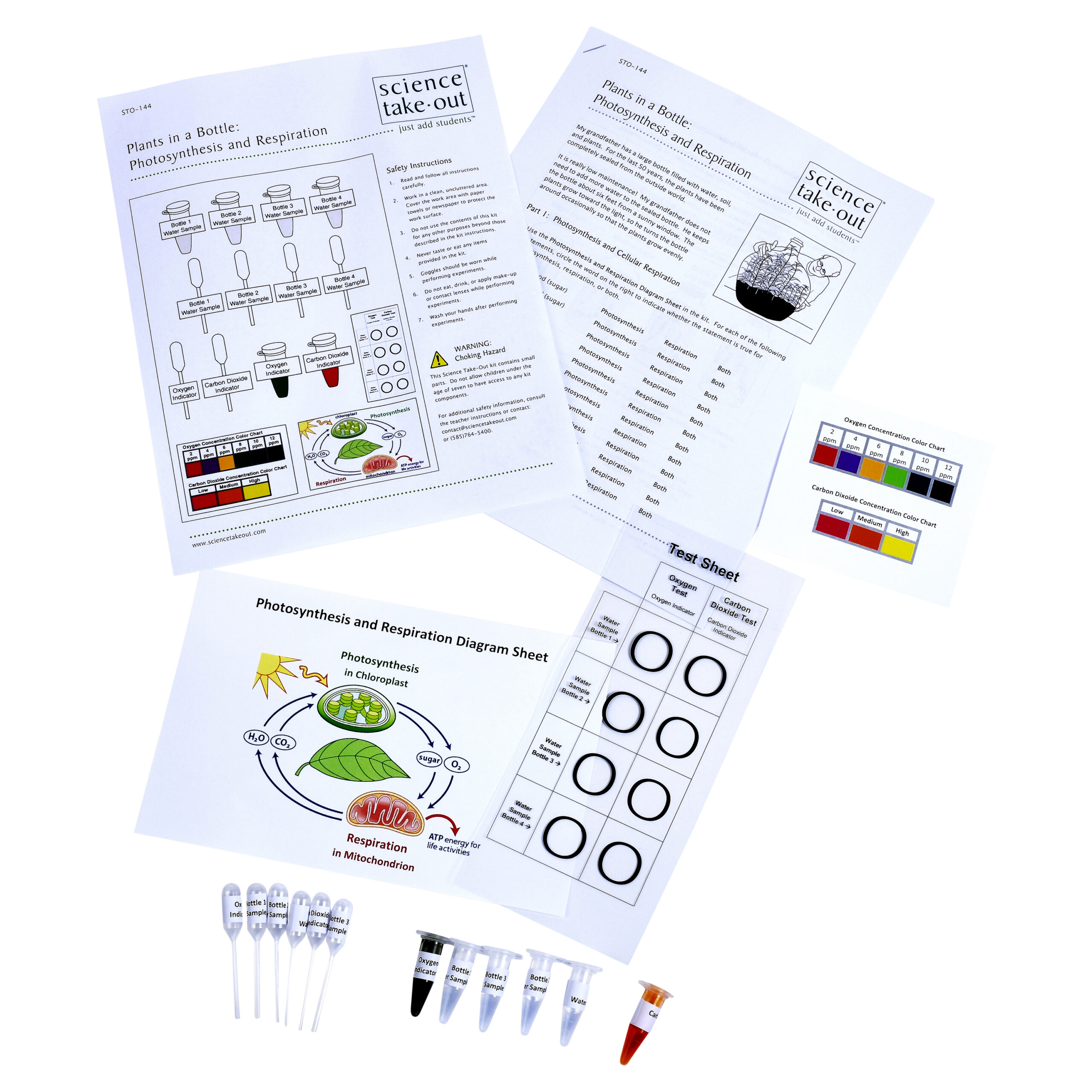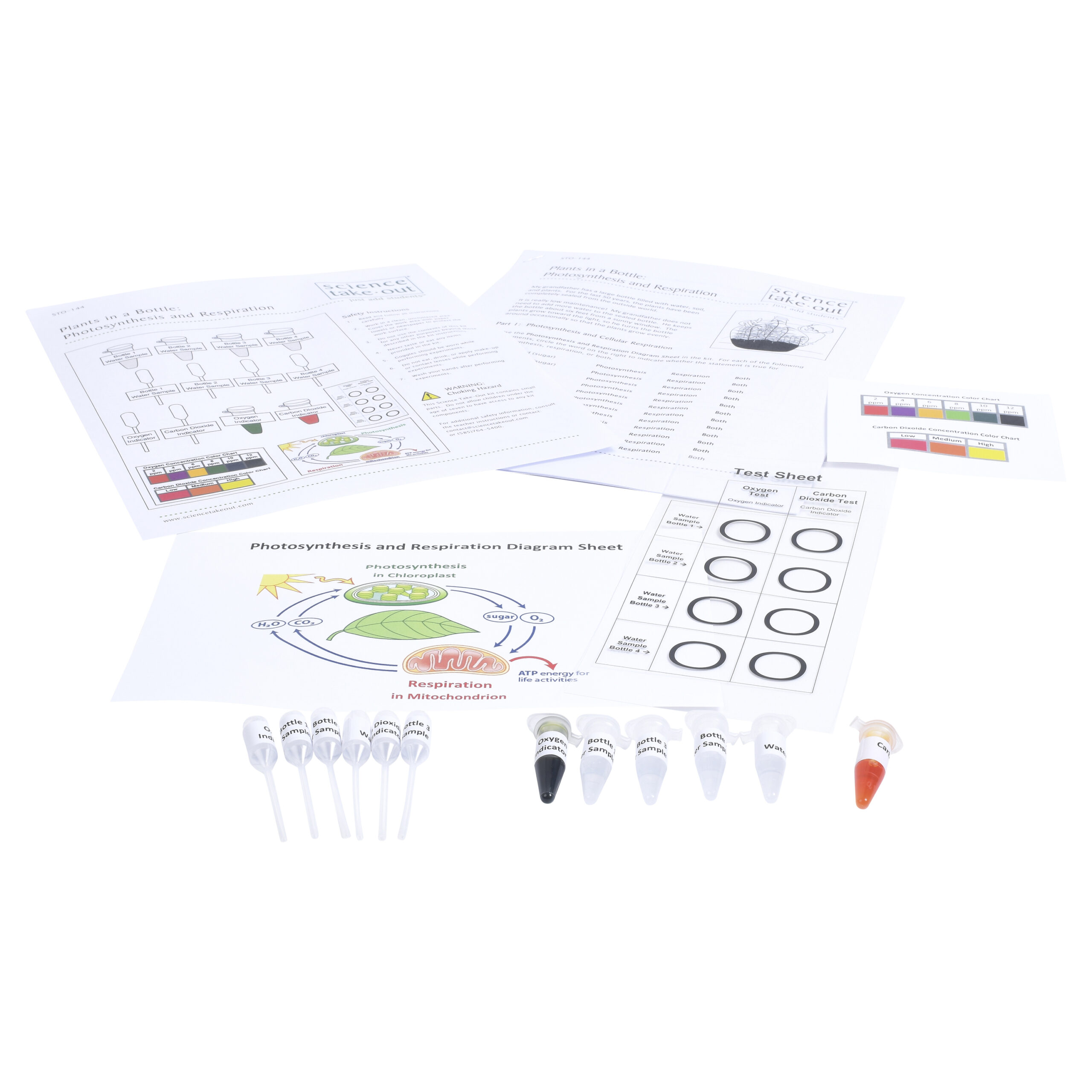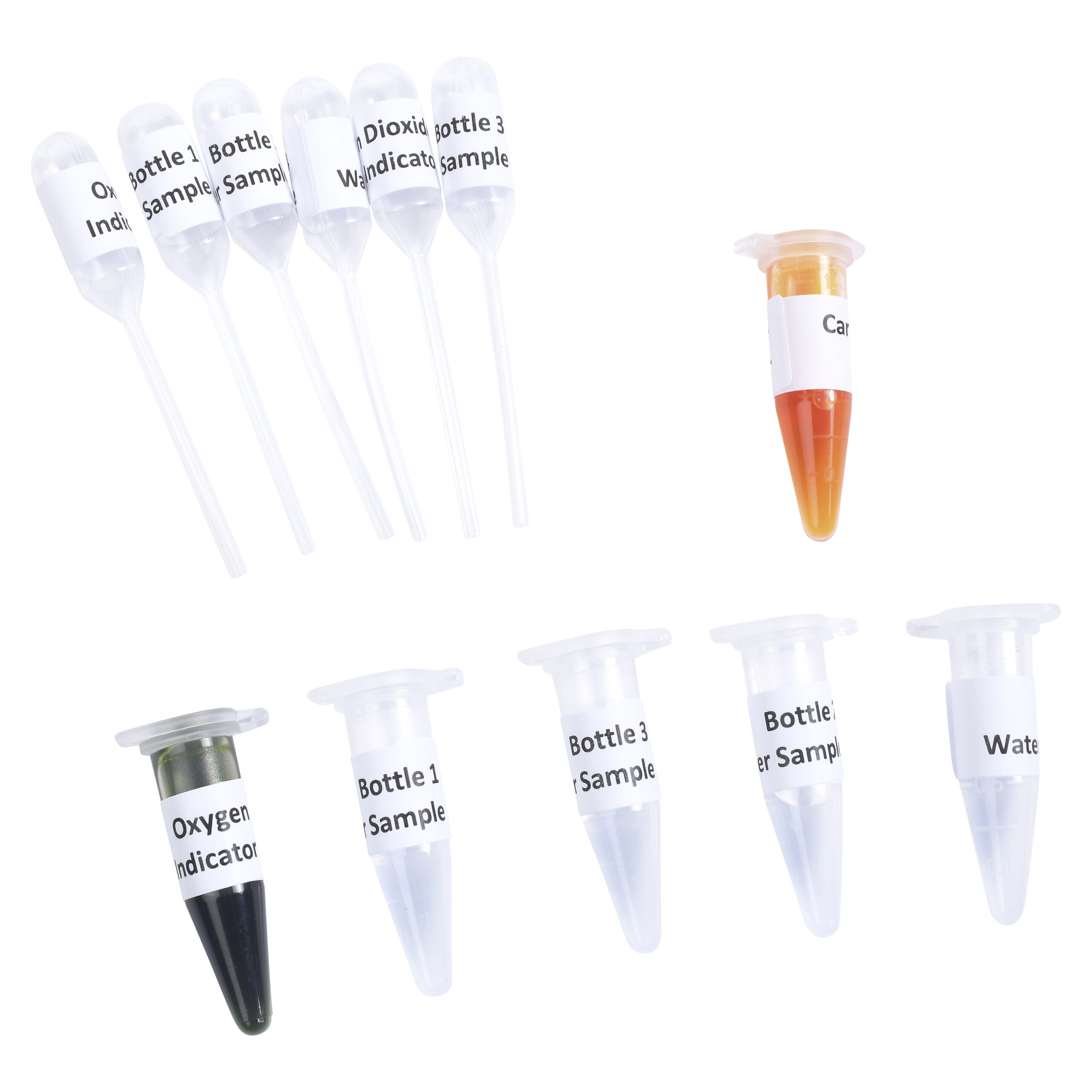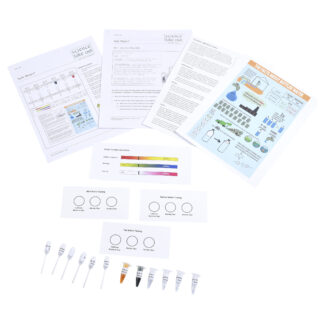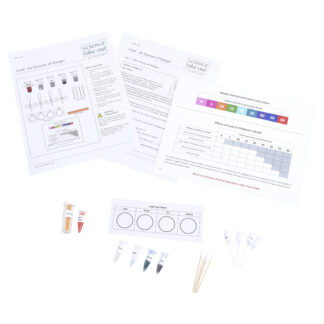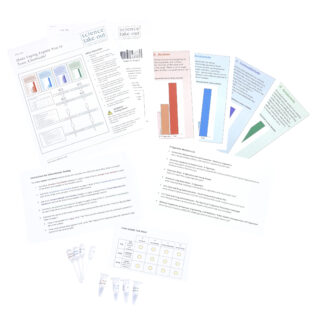Plants in a Bottle: Photosynthesis and Respiration
$15.95 – $113.95Price range: $15.95 through $113.95
Quantity Discounts Available! →
How do environmental conditions affect oxygen production and use?
Conduct simulated oxygen and carbon dioxide tests to investigate the amounts of oxygen produced and used by aquatic plants under various environmental conditions.
- Test simulated water samples from bottles containing plants exposed to different light levels.
- Collect and analyze data from a controlled experiment to determine how photosynthesis and cellular respiration affect the oxygen concentration.
Kit Includes
- Student instructions
- 4 simulated water samples
- Oxygen Indicator (simulated)
- Carbon Dioxide Indicator (simulated)
- 6 labeled droppers
- Oxygen and Carbon Dioxide Test Sheet
- Oxygen and Carbon Dioxide Concentration Color Charts
- Photosynthesis and Respiration Diagram Sheet
Quantity Discounts
Kits:
- 1 – 9 kits: $15.95 each
- 10 – 24 kits: $15.15 each
- 25+ kits: $14.36 each
Unassembled:
- 1 – 9 packs: $113.95 each
- 10+ packs: 108.25 each
Refills:
- 1 – 9 packs: $45.95 each
- 10+ packs: $43.65 each
Correlation to Next Generation Science Standards (NGSS) Shop by NGSS »
Performance Expectations:
MS-LS1-6. Construct a scientific explanation based on evidence for the role of photosynthesis in the cycling of matter and flow of energy into and out of organisms.
Science & Engineering Practices
Constructing Explanations - Construct a scientific explanation based on valid and reliable evidence obtained from sources (including the students’ own experiments) and the assumption that theories and laws that describe the natural world operate today as they did in the past and will continue to do so in the future.
Disciplinary Core Ideas
LS1.C: Organization for Matter and Energy Flow in Organisms - Plants, algae (including phytoplankton), and many microorganisms use the energy from light to make sugars (food) from carbon dioxide from the atmosphere and water through the process of photosynthesis, which also releases oxygen. These sugars can be used immediately or stored for growth or later use.
PS3.D: Energy in Chemical Processes and Everyday Life - The chemical reaction by which plants produce complex food molecules (sugars) requires an energy input (i.e., from sunlight) to occur. In this reaction, carbon dioxide and water combine to form carbon-based organic molecules and release oxygen.
Crosscutting Concepts
Energy and Matter - Within a natural system, the transfer of energy drives the motion and/or cycling of matter.
